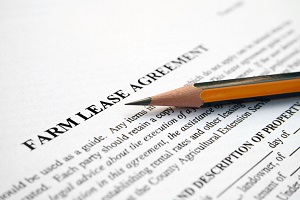If you have a small farm and are looking to expand, there are various ways you may be able to achieve that. Business expansion for small or lifestyle farmers can take place in many forms, including:
1. purchasing additional land;
2. agistment;
3. share farming; or
4. leasing additional farmland.

We will briefly go over each of these options, before delving deeper into the fourth one: leasing land to expand your small farm or hobby/lifestyle farm, and the considerations when entering into a farm land lease agreement.
Buying farmland
Purchasing more land is the most obvious option. However, it comes with a major downside, namely the need for large capital injections from either your own funds or from a lender like a bank. Buying farmland also has advantages, of course. For example, it allows you to make long-term plans for improvements on pastures and infrastructure to your own standard and desires.
Agistment
Agistment, the second option that we will briefly touch on here, is an opportunity that may be available to some small farmers. Agistment is normally a short-term practice, arranged via a verbal agreement, that can be terminated at any time by either party. Compared to leasing farmland, agistment is paid at a different rate, usually on a per-head basis rather than a whole-of-area basis.
Share farming
The third option we have included here is share farming. This is an arrangement between the owner of the land and a share farmer who operates their business on that land, with the profits from the venture split between the two parties. There are many different ways that the share farming agreement can be negotiated. For example, for a conventional cropping enterprise, the agreement could be that the land owner would supply the land and the share farmer would supply all machinery for the preparation, planting and harvesting of the crop. They would then each pay half the costs of the seed, fertiliser and chemicals.
Leasing farmland
Leasing of land can be defined as a financial agreement or arrangement where the land is rented for an extended period. In many cases that may be for 3-5 years, although the length of the land lease agreement is variable depending on the circumstances of both parties. Historically, farm leasing agreements were based on the potential income-earning ability of the property or area to be leased. In more recent times, this has changed to a percentage return on the property or land value.
Advantages of leasing land
Leasing farmland has many advantages for both the lessee and the lessor. For the lessor, one of the main benefits is being able to stay in their home and still derive an income, without the need to do the physical work involved in farming. This is particularly attractive to farmers who are nearing retirement but don’t want to move to a different location. It can be a way that a landowner can work off-farm and have someone run the farm for them, while still deriving an income from the land. There are also many lifestyle farms that can be leased. Often, the owners who purchased the farm love the area, but don’t have the experience or desire to run the property as a commercial enterprise, so they benefit from leasing the land to another farmer.
For the lessee, one of the main advantages of leasing land is the ability to more easily increase the size of their business. For small or lifestyle farm owners in particular, in areas with high capital costs of land ownership, this is one way of increasing their business size without the need to make a sizeable capital investment.
Land lease agreement considerations
There are a number of considerations that need to be made before signing a lease for farmland. In most cases, the land owner, or lessor, will supply the land, buildings, water infrastructure and fencing. The lessee generally agrees to supply the livestock or machinery for cropping and all labour for the ongoing operation of the farm.
The ongoing costs for the land owner include the rates and insurance on the infrastructure, while the costs for the lessee usually comprises all the general running costs of the farm. This would include any pasture improvement, weed control and repairs.
There are many other considerations that need to be addressed, including any restrictions on land use, the type and quantity of livestock or crops to be allowed on the land, and what measures are to be put into place if either party defaults on the agreement.
Both parties should always seek legal advice before entering into any land lease agreement.
As with any business expansion, it’s important to remember that the aim is to increase the profitability of your business, not to get bigger just for the sake of it. There are many instances where small farmers may be able to achieve an increase in the profitability of their small farm by making their current farm more productive, without the need to increase the size of the land holdings of the business.
About the author
Allan Jarrett has worked as a taxation accountant and business adviser for the past 12 years. With a lifetime of practical experience in agriculture, Allan has owned and operated a number of enterprises including dairy, beef and cropping farms in the Northern Rivers of New South Wales. He has always had a passion for breeding high quality livestock, with his family currently operating a growing Simmental beef stud.



